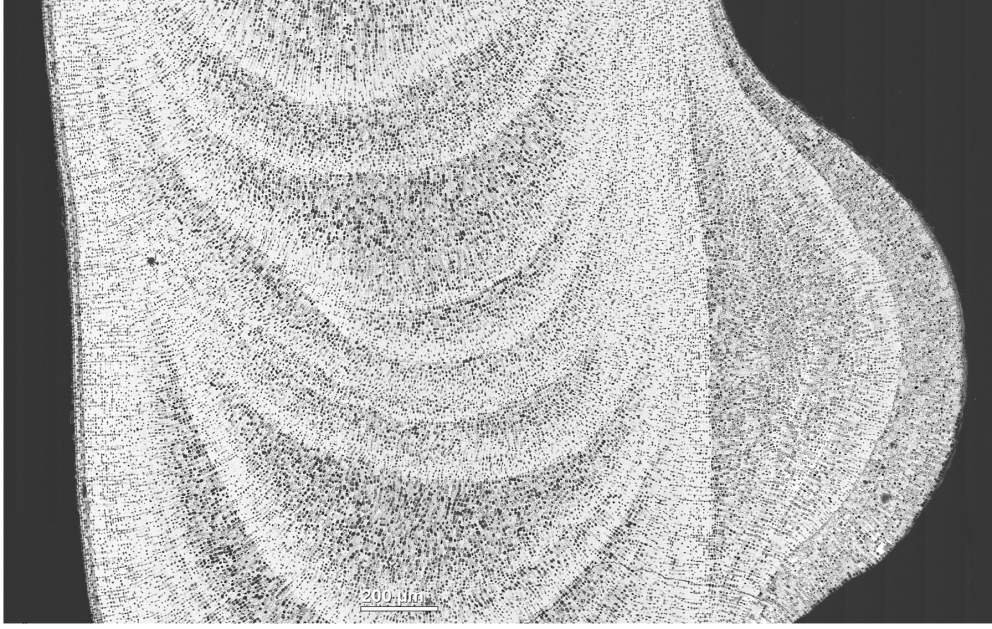The Precious Rings of Life
Second Place

Rhodoliths are an unattached, tumbleweed-like growth form of coralline red algae that shift and roll with the currents on the seafloor. They are long-lived but slow growing and calcified in nature, which results in the formation of growth bands in their tissues similar to the rings you’d see in a tree trunk. However, these same characteristics that make for such a visually striking image also make rhodoliths extremely vulnerable to the effects of climate change such as ocean acidification and warming. As such, it is now more important than ever to document the diversity of rhodolith-forming species in currently under-studied regions such as British Columbia before they dwindle or disappear. Knowing what species are present is the first step to creating and implementing effective conservation framework. In my research, I use images such as this one to observe the internal anatomy of rhodolith specimens belonging to newly discovered species from B.C. so that they may be formally named and described. This image in particular is a transverse section of a rhodolith branch viewed at high magnification under a scanning electron microscope.